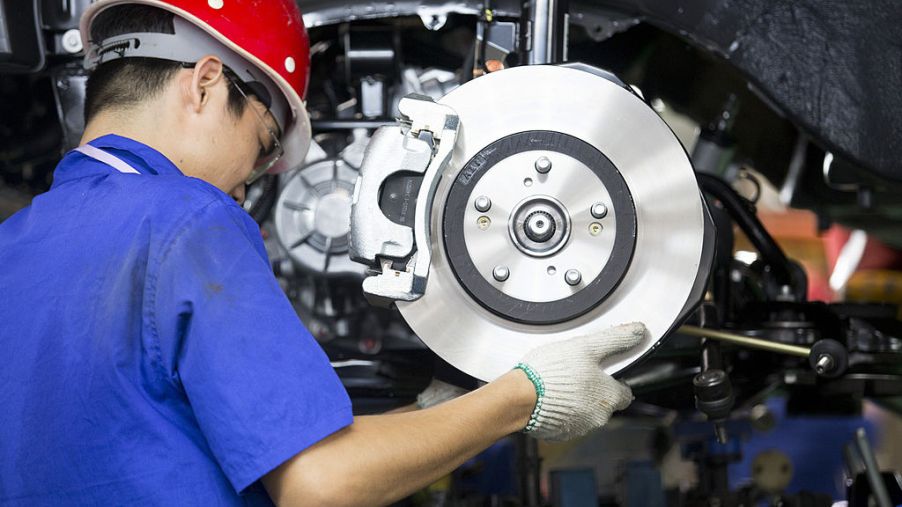
How Are Brake Pads Made?
When it comes to important safety features on today’s automobiles, similar to cheaply made tires, brake pads are not a place to skimp on these costs. This is because it is a complex, yet oddly interesting, process with many different parts and materials coming into play.
Consumers should be aware of who is manufacturing these parts and how brake pads are being made. For example, one of the leading producers of high-performance brake pads and kits, Brembo has been a recent victim of counterfeit parts being manufactured by competitors.
Brembo has taken steps to protect its brand. This includes the creation of anti-counterfeit cards and selling only through certified distributors. It’s still up to customers to spot the fakes prior to purchase. One of the biggest tip-offs to customers is the cost as these premium parts don’t come cheap and as the old saying goes, you get what you pay for.
Behind the brake scene
Today the most common type of brake pads on the market are made from metal and typically include iron, copper, steel, and graphite all bonded together to create the device. There are many reasons why metal is a wise choice for this product along with a few drawbacks. From a positive perspective:
- Metal manufacturing is cost-effective
- The material is readily available
- It’s good at transferring heat created by friction with the brake’s rotors
- Since metal is hard, pads are durable
On the downside, metal is also heavy which has a relatively small impact on a car’s fuel economy and not a great choice for high-performance vehicles. Brake pads work best when warm so on a cold day, it may take a short while for the part to warm up to be the most effective and efficient operating status.
Step-by-step process
Tire Review published a piece on the step-by-step process that goes into the manufacturing of brake pads from inception to completion. It all starts in the lab when designers are often examining an original formula as a starting point for development. Engineers are also looking at the design of the backing plate for the entire component.
The next step involves creating a brake dynamometer which is a critical part of the braking system. For those unaware, a dynamometer is a complex monitoring device that measures the force generated by an engine among other things. When the brake is applied, it resists the movement of the force generated by the motor.
Brake pad material development
Prior to production, brake manufacturers and designers will look closely at different suppliers as a source for the raw materials needed to complete the construction of the pad. Along with the price, engineers will carefully examine different characteristics of how these materials will perform when it comes to potential issues with noise, wear-and-tear along with other considerations.
Stamping the backing plate
After some tweaking is performed during the development process to increase performance, stamping the backing plate is the next step. Although almost half of the steel coils needed for this process will wind up on the cutting room floor, it’s later recycled before the steel is oiled and pickled to prevent corrosion.
Dimensions are checked before special features such as pins, friction retention devices, and other hardware are applied. Then the backing plate is blasted and washed to remove problematic imperfections that could be leftover following the stamping process. Now the backing plate is primed for adhesive which is the most common method used in the production process.
Mixture and molding
It’s at this station where different friction materials are measured and mixed to ensure better overall performance in the future. The components are precisely measured and placed into a mixture to ensure the final result is homogeneous. The mixture is made into “pre-molds” and the resulting “pucks” will be pressed and molded to form the backing plates.
The plates are placed into a mold and friction material is placed on top. In a press, the friction material is molded to the backing plate using pressure and heat. It forces the material through holes in the plate in order to increase retention. This step is called “integral molding” and is one of the methods used in attaching the friction material.
This is the final process of producing the brake pad itself. However, the product will undergo other steps before it’s packaged for sale. This includes curing the pads in an oven and grinding to size. Finally, the brake pads will be tested to ensure performance and durability before being shipped to auto parts stores and car manufacturers.


